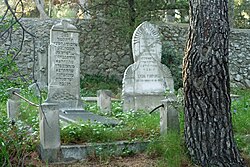
Ancona is a city and a seaport in the Marche region in central Italy, with a population of around 101,997 as of 2015. Ancona is the capital of the province of Ancona and of the region. The city is located 280 km (170 mi) northeast of Rome, on the Adriatic Sea, between the slopes of the two extremities of the promontory of Monte Conero, Monte Astagno and Monte Guasco.

The Mount of Olives or Mount Olivet is a mountain ridge east of and adjacent to Jerusalem's Old City. It is named for the olive groves that once covered its slopes. The southern part of the mount was the Silwan necropolis, attributed to the ancient Judean kingdom. The mount has been used as a Jewish cemetery for over 3,000 years and holds approximately 150,000 graves, making it central in the tradition of Jewish cemeteries.
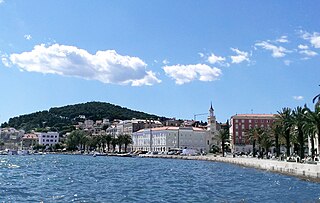
Marjan is a hill on the peninsula of the city of Split, the second largest city of Croatia. It is covered in a dense Mediterranean pine forest and completely surrounded by the city and the sea, making it a unique sight. Originally used as a park by the citizens as early as the 3rd century, it is a favorite weekend excursion destination and a recreational center for the city. It is also the setting for numerous beaches and jogging trails as well as tennis courts and the city Zoo, all surrounded by the scenic forest. The tip of the peninsula houses the Institute of Oceanography and Fisheries.
The history of the Jews in Trieste, Italy goes back over 800 years.

The history of the Jews in Croatia dates back to at least the 3rd century, although little is known of the community until the 10th and 15th centuries. By the outbreak of World War II, the community numbered approximately 20,000 members, most of whom were murdered during the Holocaust that took place on the territory of the Nazi puppet state called the Independent State of Croatia. After World War II, half of the survivors chose to settle in Israel, while an estimated 2,500 members continued to live in Croatia. According to the 2011 census, there were 509 Jews living in Croatia, but that number is believed to exclude those born of mixed marriages or those married to non-Jews. More than 80 percent of the Zagreb Jewish Community were thought to fall in those two categories.
Morpurgo is an Italian surname of Jewish origin. Originally Marpurg, from the Austrian city Marburg an der Drau. Key ancestor was Moises Jacob, father of Petachia, in Bad Radkersburg, Austria. Petachia (1355–1460) had three sons who died in Maribor. Their subsequent multinational progeny took the surnames Maribor, Marburg, Marpurg, Morpurgo, Marlborough, Murphy.
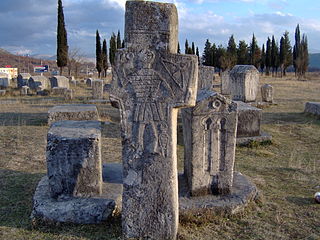
Stećak or Stećci in plural form is the name for monumental medieval tombstones, that lie scattered across Bosnia and Herzegovina, and the border parts of Croatia, Montenegro and Serbia. An estimated 60,000 are found within the borders of modern Bosnia and Herzegovina and the rest of 10,000 are found in what are today Croatia (4,400), Montenegro (3,500), and Serbia (2,100), at more than 3,300 odd sites with over 90% in poor condition.
West Ham Jewish Cemetery is a cemetery for Jews in West Ham in the London Borough of Newham, England. It was established in 1856 by the New Synagogue on Great St. Helen's, soon joined by the Great Synagogue in Duke's Place, both of them London congregations.

The New Jewish Cemetery is a historic necropolis situated on 55 Miodowa Street in Kraków, Poland. Located in the former Jewish neighborhood of Kazimierz, it covers an area of about 4.5 hectares. Since 1999, the cemetery is a registered heritage monument. The grounds also feature a well-preserved mortuary.
Jews' Gate Cemetery is a Jewish cemetery located on Windmill Hill within a nature reserve in the British Overseas Territory of Gibraltar. Also known as the Windmill Hill Cemetery, it is the site of the earliest known Jewish burials in Gibraltar. The cemetery opened by 1746 and closed in 1848. It is the burial site of a number of Gibraltar's Chief Rabbis. The graveyard is protected by the law of Gibraltar.
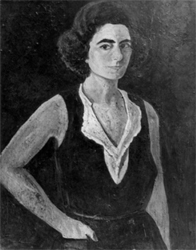
Tina Morpurgo was a Croatian painter from Split.
Emilio Stock (1868–1951) was an Italian industrialist and businessman of Jewish origin.
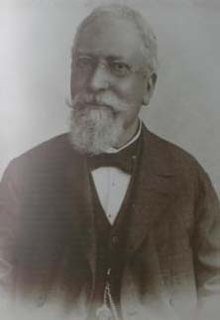
Vid Morpurgo (1838–1911) was a Dalmatian industrialist, publisher, politician and member of a notable Split family Morpurgo.

Zemun Cemetery is a public cemetery situated in Zemun on the Gardoš Hill. It is bounded by Cara Dušana Street, Nade Dimić Street, Sibinjanin Janka Street and Grobljanska Street, as well as with the staircase towards the Branka Radičevića Square, thus making the northwest boundary of the Old Core of Zemun. The cemetery is proclaimed the cultural monument.
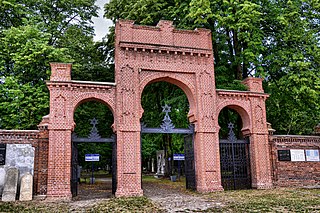
The Łódź Jewish Cemetery, also known as the New Jewish Cemetery, was once the largest Jewish cemetery in Poland and one of the largest in the world. Located in the city of Łódź on Bracka Street, the necropolis was opened in 1892 and occupies around 44 hectares of land. The cemetery contains from 180,000 to 230,000 marked graves, as well as mass graves of victims of the Litzmannstadt Ghetto and the Holocaust. From 1893 to 1896, the basic construction of the necropolis was completed under the supervision of well-known architect Adolf Zeligson.

The Jewish Cemetery is a cemetery for the Paradesi Jews of Chennai, India. It is located off Lloyd's Road. The cemetery remains the only memoir of the once significant Jewish population of Chennai, which has now almost become extinct. Burials include the tombstones of 18th-century Jewish diamond merchants. The cemetery houses less than 30 graves, of which a few are over 300 years old. The cemetery is located on a poor market area of the road west of the Marina Fish Market and is adjacent to Baháʼí Faith and Chinese cemeteries. The cemetery formerly used to have an iron gate on which a plaque was attached on which a Star of David and the words "Jewish Cemetery" were inscribed. After the renovation around 2016, these doors were replaced with sturdier ones. Before the renovation, the cemetery had been reported to be in a state of severe disrepair – with rusted iron gates, partially grown shrubs ,and cracked walls. People in the surrounding area were oblivious to the existence and historical importance of the cemetery. As of 2016, it had few visitors.

The Jewish Cemetery in Wrzeszcz, a borough of Gdańsk, Pomeranian Voivodeship, Poland, was established in the 18th century. The cemetery on the northern slope of Królewskie Wzgórze on Romualda Traugutta Street is now a publicly accessible park. It is not a protected heritage site.

The Jewish cemetery in Oświęcim, Poland, was destroyed by the Germans during World War II and partly restored by returning Jewish survivors after the Holocaust. In Communist Poland it fell into disrepair and was fully restored in the 1990s.

The Split Synagogue in Split, Croatia is one of the oldest Sefardic synagogue still in use today. It was built in the early 1500s.
